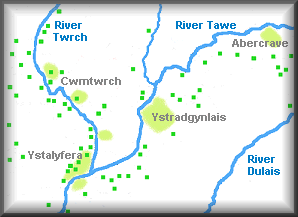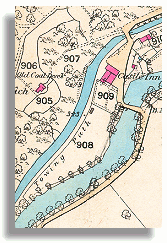Main coal
workings
around
Ystradgynlais
Sketch map of some
of the main coalmine workings in the Ystradgynlais area
during the Victorian period.


| The new demands of industry | ||
|
Coal had been dug in the Upper Swansea
Valley district for hundreds of years. It was used for lime
burning for agricultural use and also for heating
the homes of local people. |
||
|
Main coal Sketch map of some |
 |
 |
|
It was known that there were large
deposits of iron ore, coal and limestone in the Tawe Valley
which had hardly been touched by the end of the 18th century. Back to Ystradgynlais coal menu
|
|
||
|
RDR
|